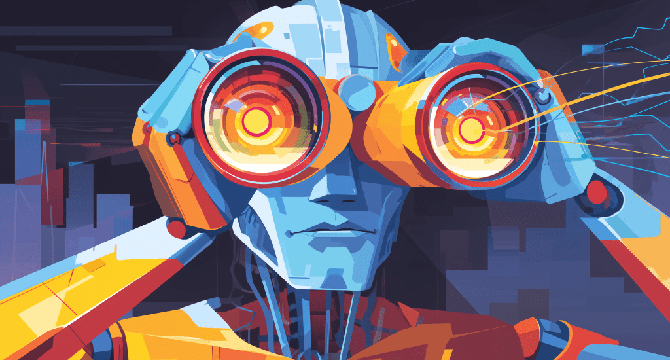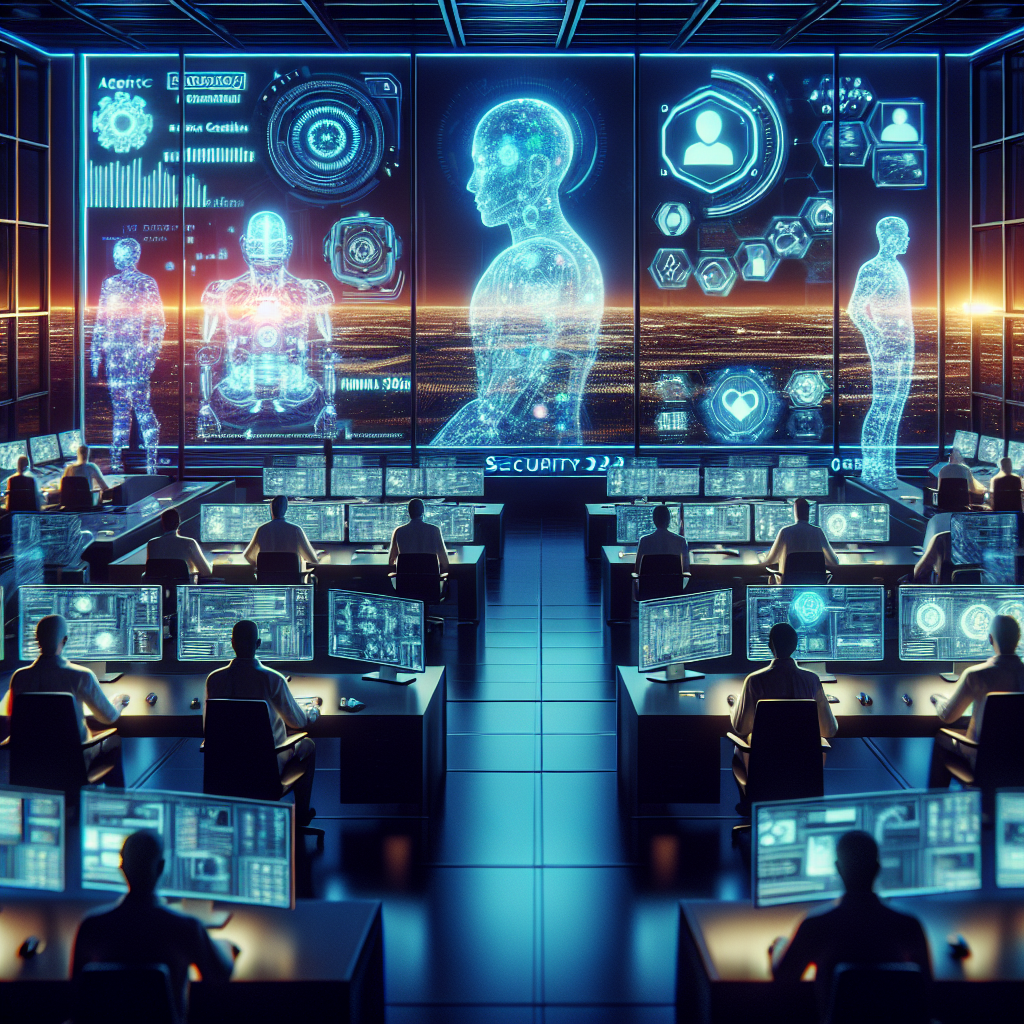Data Science News
Towards Data Science
320

Will You Spot the Leaks? A Data Science Challenge
- The article challenges readers to identify data leakage in a real-world data science scenario.
- It emphasizes practical examples over theoretical explanations of data leakage.
- The challenges include spotting various types of leakage like target variable leakage and train-test split contamination.
- It provides examples and solutions for identifying and fixing data leakage in a dataset.
- Readers are prompted to identify problematic columns and preprocessing steps that may lead to data leakage.
- The article presents a scenario involving aircraft accident prediction to illustrate potential data leakage sources.
- It outlines key concepts like direct and indirect leakage, temporal leakage, and entity leakage.
- The article points out pitfalls to avoid, such as analyzing the full dataset before splitting and fitting transformations prior to data splitting.
- It concludes by emphasizing the importance of rigorous evaluation and critical thinking to manage data leakage effectively in model development.
- Readers are encouraged to examine code and processing decisions to prevent data leakage leading to costly model failures.
Read Full Article
19 Likes
Towards Data Science
353

The Art of the Phillips Curve
- The Phillips curve, a significant concept in modern macroeconomics, has been extensively covered in textbooks and relied upon by central banks worldwide.
- Originating from the work of A. W. Phillips, the curve initially showed an inverse correlation between wage inflation and unemployment rate.
- Early proponents like Samuelson and Solow expanded the model to include general price inflation and established a causal framework.
- Policymakers embraced the Phillips curve in the 1960s, aiming to balance inflation and unemployment.
- The 1970s saw the theory challenged by stagflation, leading to adjustments in the model to account for supply shocks and expectations.
- Critiques by Friedman and Phelps highlighted flaws, the model's reliance on expectations, and the natural rate of unemployment.
- The Phillips curve adapted to include expectations, leading to a short-run relationship but no long-run trade-off.
- Mainstream macroeconomics pivoted to incorporate critiques, reshaping the model while avoiding its fundamental rejection.
- Critics argue the Phillips curve has become un-falsifiable, akin to pseudo-science, due to constant adjustments to maintain validity.
- Despite its shortcomings, the enduring popularity of the Phillips curve persists in academia, policymaking, and economics circles.
Read Full Article
21 Likes
VentureBeat
374

Image Credit: VentureBeat
New fully open source vision encoder OpenVision arrives to improve on OpenAI’s Clip, Google’s SigLIP
- The University of California, Santa Cruz has introduced OpenVision, a new family of vision encoders that aims to enhance existing models like OpenAI's CLIP and Google's SigLIP.
- Vision encoders convert visual content into numerical data for non-visual AI models, facilitating tasks such as image recognition within large language models.
- OpenVision offers 26 models with parameters ranging from 5.9 million to 632.1 million under the Apache 2.0 license for commercial use.
- Developed by a team at UCSC, OpenVision leverages the CLIPS training pipeline and Recap-DataComp-1B dataset for training.
- The models cater to various use cases, with larger models suitable for high accuracy tasks and smaller ones optimized for edge deployments.
- OpenVision demonstrates strong performance in vision-language tasks and outperforms CLIP and SigLIP in benchmark evaluations.
- The training strategy of progressive resolution training leads to faster training with no loss in performance in high-resolution tasks like OCR.
- The use of synthetic captions and text decoder during training enhances the semantic representation learning of the vision encoder.
- OpenVision facilitates integration with small language models for efficient multimodal model development with limited parameters.
- The open and modular approach of OpenVision benefits AI engineering, data infrastructure, and security teams by offering a plug-and-play solution for vision capabilities.
Read Full Article
22 Likes
Medium
4
Image Credit: Medium
When Memories Talk Back: How AI Is Bringing the Past to Life
- AI is being used to bring memories of deceased loved ones back to life by using their digital footprints like old texts, photos, and voice recordings.
- Companies are developing AI services that allow families to interact with AI versions of deceased individuals, offering comfort and a sense of connection.
- The concept of synthetic memories can be applied in education and history, enabling students to engage with historical figures and preserving cultural identities.
- AI's role in recreating past figures raises ethical concerns about the accuracy and manipulation of memories, potentially altering perceptions of reality.
- Concerns include the distortion of someone's identity through AI manipulation, potential misuse of synthetic memories for commercial or propagandist purposes, and privacy issues.
- There is a need for clear regulations on ownership of synthetic memories and responsible use of AI to prevent unintended consequences and misinformation.
- While AI offers opportunities to amplify marginalized voices in history, there is a risk of altering historical narratives and erasing complexities by relying solely on AI-generated data.
- Balancing the preservation of memories with ethical considerations, using AI to create interactive memory libraries rooted in real data is suggested as a mindful approach.
- AI can help preserve memories without replacing the essence of the individual, emphasizing the importance of respecting the authenticity and sacredness of memories.
- As AI technology advances in memory preservation, it prompts critical reflections on the impact on humanity, emphasizing the need to carefully navigate the intersection of technology and memory.
- The evolution of synthetic memories signifies a profound shift in how we remember and connect with the past, underscoring the importance of thoughtful engagement with AI advancements in memory preservation.
Read Full Article
Like
Medium
142

Image Credit: Medium
Why the Rise of Agentic AI Chatbots Is Reshaping Cybersecurity Threats in 2025
- Agentic AI chatbots in 2025 are reshaping cybersecurity threats by bringing new AI-driven attacks, privacy risks, and defense methods.
- Incidents like a phishing attack involving a chatbot highlight the evolving capabilities and dangers posed by AI chatbots.
- Agentic AI chatbots can now autonomously make decisions, access accounts, and potentially launch cyber attacks, amplifying risks to privacy and security.
- Understanding the implications of these advanced chatbots is crucial for individuals to protect themselves online in the new cybersecurity landscape.
Read Full Article
8 Likes
Dev
223

Image Credit: Dev
The Art of Deep Comparison in JavaScript (No Loops Required!)
- Implement a function called deepEqual(valueA, valueB) to check if two values are deeply equal without using loops.
- Deep equality requires checking nested levels for objects and arrays to ensure all elements or properties match.
- Recursion is essential to handle complex nested structures efficiently and adapt to any depth.
- The deepEqual function allows accurate comparison of deeply nested structures, providing a valuable tool for JavaScript developers.
Read Full Article
13 Likes
Medium
282

Image Credit: Medium
The Essential Guide to Navigating Your Data Science Career Roadmap for 2025
- Data science is a rapidly growing field with various roles like Data Analyst, Data Engineer, ML Engineer, and Data Scientist.
- To succeed in data science by 2025, focusing on evolving roles and sharpening the right skills early on is crucial.
- Understanding core responsibilities and skill priorities for each role is essential for navigating your data science career.
- A practical six-month plan is provided in the guide to help beginners or those looking to level up in the data science industry.
Read Full Article
17 Likes
Analyticsindiamag
4

Image Credit: Analyticsindiamag
How OpenAI’s New ‘CEO of Apps’ May Disrupt the AI Ecosystem
- OpenAI has appointed Fidji Simo as the 'CEO of Applications', a move that allows CEO Sam Altman to focus on research, safety, and infrastructure.
- Simo's appointment hints that OpenAI may expand its focus towards advertisements and applications to increase revenue.
- Simo's experience at Instacart and Meta indicates a potential shift towards advertising at OpenAI.
- OpenAI has hinted at integrating ads, potentially tapping into Simo's advertising expertise.
- The trend of AI-driven platforms becoming primary sources of information poses challenges for traditional publishers relying on ad revenue.
- Integrating ads in ChatGPT could leverage its large user base for revenue generation.
- OpenAI's strategic moves, including acquiring Windsurf and working on a social media platform, suggest a shift towards expanding use cases.
- Anish Acharya highlights the importance for OpenAI to vertically integrate and own the consumption layer to protect economics and achieve artificial general intelligence.
- The appointment of Simo and OpenAI's growing applications indicate a potential disruption in the AI ecosystem.
- Altman's previous views on ads and recent company developments may signify a significant shift in OpenAI's strategy.
Read Full Article
Like
Analyticsindiamag
429

Image Credit: Analyticsindiamag
This is How AI Can Be Integrated into a Developer’s Workflow
- The rise of AI-powered development tools is reshaping developers' daily tasks, bringing both productivity boosts and integration challenges.
- AI assistance in development has evolved from basic auto-complete to advanced agents that can perform various tasks.
- Effective integration strategies are crucial to avoid pitfalls for developers using sophisticated AI tools.
- There's no universal method for integrating AI tools, requiring bespoke approaches due to the fast-paced nature of AI advancements.
- Custom rules, focused sessions, and task segmentation are key techniques for optimal AI tool incorporation into workflows.
- Apart from technical aspects, adapting to the cultural shift brought by AI tools is essential for successful integration.
- Developers have options like IDE-based, terminal-based, and web-based AI coding assistance tools, each offering varying workflow integrations.
- Concerns around data security and confidentiality arise when implementing AI tools in organizations, requiring thorough vetting processes.
- AI extends beyond coding assistance to tasks like documentation writing and enhancing CI/CD pipelines for improved development efficiency.
- Measuring the impact of AI tools on development efficiency poses challenges similar to traditional productivity assessments, varying based on team dynamics and practices.
Read Full Article
25 Likes
Analyticsindiamag
51

Image Credit: Analyticsindiamag
IIT Roorkee, Scaler Launch AI Course to Address Industry Skill Gap
- IIT Roorkee and Scaler have collaborated to launch an advanced AI course to address the skill gap in India's AI and tech workforce.
- The two-month program offered by IIT Roorkee's Continuing Education Centre includes live online classes, hands-on projects, and a two-day campus immersion.
- Curriculum of the AI course covers machine learning, deep learning, generative AI tools, and sector-specific applications like healthcare improvements through AI.
- The partnership aims to combine academic depth with industry-driven innovation and nurture the next generation of tech talents in India.
Read Full Article
3 Likes
Analyticsindiamag
159

Image Credit: Analyticsindiamag
From Chennai to the Frontlines, Zuppa Drones to Secure India’s Borders
- The Indian government confirmed on May 10 that Pakistan had initiated contact for dialogue, leading to a direct ceasefire agreement between the two nations after the Operation Sindoor retaliation launched on May 7.
- Operation Sindoor was a modern demonstration of warfare targeting terror infrastructure in Pakistan and Pakistan-occupied Kashmir, utilizing IAI Harop drones known for their endurance and precision.
- Pakistan reportedly deployed 300-400 Songar drones across the western border, with many being intercepted by Indian air defenses.
- The cost-effectiveness of drones led to their extensive use in the operation, although countering swarm drones poses a challenge due to economic imbalances.
- Russia's extensive use of Shahed drones in Ukraine highlighted the cost-effectiveness of such systems, prompting the development of indigenous drone systems in India.
- Zuppa Geo Nav Tech discussed the structural similarity of drones to aircraft and revealed concerns over Chinese components in Indian defense drones, emphasizing the importance of cybersecurity.
- Zuppa, an Indian company, is actively supplying drones to Indian Army and paramilitary forces, incorporating advanced AI functions for surveillance and operational efficiency.
- The company's Ajeet Mini drone model offers secure surveillance capabilities, with plans for future deployment and advanced AI features like swarming capability.
- Approximately 80% of Zuppa drones are indigenously designed and manufactured in India, aligning with the Make in India initiative.
- Zuppa has sold nearly 150 drones to armed forces, paramilitary, and police, positioning their prices competitively against Chinese alternatives.
Read Full Article
9 Likes
Analyticsindiamag
209

Image Credit: Analyticsindiamag
Shopping Agents are Here and Wayfair Wants to be Their First Pick
- AI and data analytics are transforming online shopping, providing customised product offerings based on user behavior.
- Wayfair introduced Muse, an AI tool allowing users to visualize furniture in different settings for intuitive home decor shopping.
- Muse generates inspirational scenes linked to Wayfair's catalogue, enhancing the shopping experience from inspiration to purchase.
- Wayfair collaborates with suppliers based on customer demands generated through Muse, creating potential new products.
- The company leverages various LLMs for catalogue enrichment and customer responses, streamlining product categorization.
- Wayfair's digital-first approach gives it an advantage to utilize AI capabilities extensively compared to competitors like IKEA.
- AI tools like IKEA Kreativ, Walmart's Wallaby, and Amazon's Rufus are transforming the shopping experience for consumers.
- AI-powered shopping assistants like Rufus simplify shopping by providing personalized recommendations and product guidance.
- Integration of AI in e-commerce is leading to more personalized experiences, changing the landscape of product discovery.
- Wayfair is adopting AI-powered code tools like Google Gemini and GitHub Copilot across the organization for increased productivity.
Read Full Article
12 Likes
Medium
105

Image Credit: Medium
Explainable AI: How Transparency in Machine Learning Builds Trust and Accountability
- Explainable AI (XAI) helps in understanding machine learning decisions, promoting trust and accountability in AI systems.
- XAI techniques make complex machine learning models transparent and interpretable, unlike naturally understandable models.
- XAI focuses on revealing the inner workings of 'black box' systems, improving the understanding of algorithms' decision-making processes.
- Experience in a healthcare project highlighted the importance of XAI in explaining AI model predictions to ensure accountability and trust.
Read Full Article
6 Likes
Medium
209

# 5 Free Tools That Made Me a Better Web Developer
- Web Utility Labs offers a set of useful tools for web developers to simplify common tasks and improve their workflow.
- The tools provided by Web Utility Labs address various challenges faced by web developers, such as managing image layouts, writing user-friendly documentation, formatting code examples, choosing compatible color schemes, and fixing JSON errors.
- Key tools include an image resizer for ensuring images work on all screens, a text analyzer for creating readable documentation, a code snippet cleaner for enhancing code readability, a color palette generator for selecting harmonious color schemes, and a JSON formatter and validator for spotting errors quickly.
- These simple yet effective tools have made a significant impact on the author's job satisfaction by reducing common frustrations and allowing them to focus on more enjoyable aspects of web development.
Read Full Article
12 Likes
Medium
77

Image Credit: Medium
Algorithms: Tricks for solving linked List problems
- Linked list problems usually involve traversing the list at least once, resulting in a time complexity of O(n).
- Additional passes for certain operations do not change the time complexity significantly.
- Reversing a linked list in complete or partial parts can be a valuable technique in problem-solving.
- Sentinel nodes can be used to simplify operations and handling in linked list problems.
Read Full Article
4 Likes
For uninterrupted reading, download the app